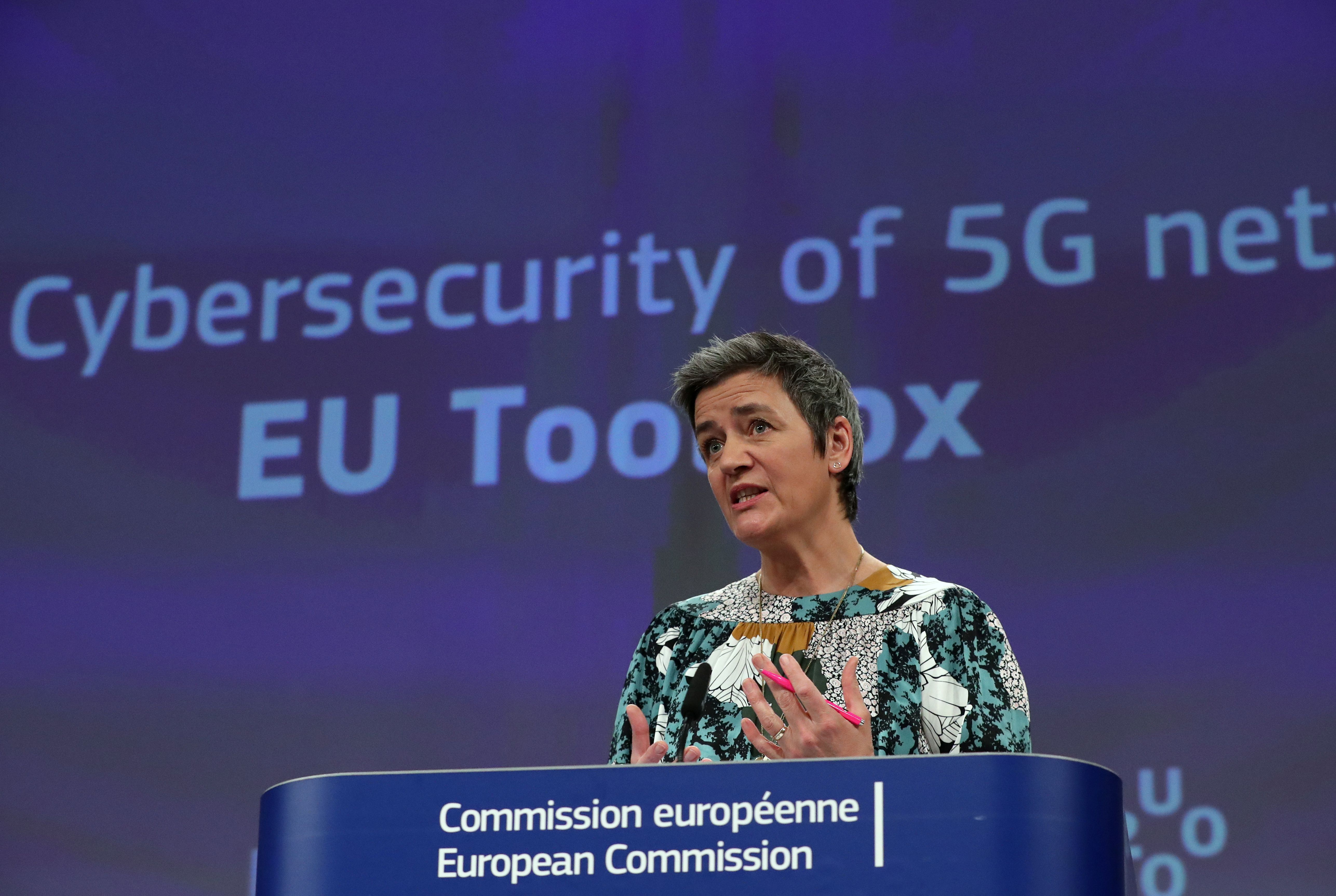The EU’s New Digital Strategy: Moderate Ambitions with Limited Resources

The Context of the New Strategy
Digital policy is one of the three priorities of the new EC, alongside climate policy (expressed in the vision of the European Green Deal) and an economy that works for people. Even before being officially elected as the President of the Commission, Ursula von der Leyen announced that the EU would lead the way to “technological sovereignty”. By this she meant setting global standards for technologies such as blockchain, quantum computers and new ways of using algorithms. She also announced increased investments and legal regulations, especially in the fields of artificial intelligence (AI), cyber-security and the responsibility of digital platforms for published content.
The announced plan is both a continuation and addition to previous EU activities on digitisation. In recent years, they mainly concerned regulation of the digital single market. During the tenure of the Jean-Claude Juncker’s Commission, 30 legislative acts were proposed in this area, of which 28 were finally adopted. Among them were General Data Protection Regulation (GDPR) and the Directive on Copyright in the Digital Single Market. In addition, in 2018, the EC initiated the process of creating a European artificial intelligence strategy. Based on the experience and strategies emerging at that time in the Member States, it appointed group of experts who addressed the ethical dimension of AI first.
EU institutions are also active in the development of 5G infrastructure in Europe. In 2019, the EC, together with Member States’ experts, developed a coordinated assessment of the risk related to cyber-security of 5G networks. Then, in early 2020, they published guidelines on the security of 5G infrastructure in the EU.
Priorities of the New Strategy
The strategy consists of three documents: a communication on shaping the digital future of Europe, “White Paper on Artificial Intelligence”, and a European data strategy, which share common priorities. First, they are solutions that serve citizens in the field of security (including the development of artificial intelligence based on ethical principles), developing a reliable 5G and 6G infrastructure, education, and breakthrough technologies (such as quantum computers) in the EU. The second area includes solutions for the digital single market. These are proposals to build common data spaces in several areas, including health, agriculture, finance and climate. They aim to make EU entities independent of the infrastructure of technological giants from outside Europe. The EC announced the revision of regulations regarding competition policy on the digital market and a proposal for a Digital Services Act. It also maintains the earlier announcement of the resumption of work on digital tax in the absence of an international agreement at OECD level by the end of 2020. The third dimension of the strategy concerns measures for democratic and sustainable technology development. The EC understands this as increasing the responsibility of digital platforms for published content, revising regulations regarding digital identity, and an action plan to strengthen media resistance to manipulation and false content. For now, however, it does not present specific proposals.
The AI white paper envisages regulations in risk areas, while in other cases it only outlines the general framework of conduct. The basic rule is to build AI based on social trust. It announces regulations on the usage and processing of public and industrial data, as well as a proposal for a voluntary mechanism for certifying AI products as “trustworthy”. The white paper in now subject to public consultations until June 2020. The opinions collected will influence the shape of subsequent EC legislative proposals.
Digital projects are to be financed primarily from the multiannual budget. In 2018, the EC proposed a new Digital Europe programme worth € 9.2 billion. Within its framework, five investment areas are envisaged: supercomputers, AI, cyber-security, education and digitisation of public administration. In the course of ongoing budget negotiations, however, a cut in funding for research and development of new technologies is likely due to the conflict over the size of the budget. In the face of the ongoing coronavirus pandemic, research priorities will also change to favour biotechnology.
The Weaknesses of the Strategy
The documents contain few legislative proposals. In particular, there is no indication of the threat of monopolies on the digital market and ways to counteract them, apart from the long-discussed Digital Services Act. There are also no proposals to combat non-digital barriers on the single market (e.g. bureaucracy or various national regulations) that block the development of small and medium-sized enterprises at risk from the dominant position of the largest companies.
The strategy does not provide for new sources of financing for the digital programme, other than those proposed in the previous term of the EC. Apart from the risk of reducing the commission's proposal within the budget, and general announcements of intensifying public-private cooperation, the strategy does not include convincing financial or administrative incentives to stimulate cooperation. This is due to, among other things, divergence of Member States' interests regarding the regulation of access to industrial data.
Conclusions
The strategy is a preview of an extensive package of EU regulations and standards for the development of the EU digital market. Published documents show two directions chosen by the EU: the development of European technologies in areas where it is possible to achieve partial independence from external companies, and the protection of citizens’ rights and European values (as stated in treaties) in the development of digital technologies. The strategy’s strength is its wide ranging nature, going far beyond regulations on the single market, and covering the most important EU policies (climate, agricultural, industrial and energy). The ambitions for creating and implementing regulations in the field of privacy protection, online security and building ethical standards for AI are also clear. The strategy provides for the creation of several non-legally binding documents ordering the principles of developing artificial intelligence, creating data spaces and expanding the 5G infrastructure. This approach leaves Member States with full responsibility for the final regulations, but increases the independence of EU institutions in proposing standards and general guidelines.
The strategy provides for increased intra-EU cooperation on digitising industry. When proposing the creation of high-quality data spaces, however, it does not provide for effective mechanisms to encourage knowledge sharing. This may mean limited access to the proposed solutions for smaller and less developed entities in specific industries, which will increase development differences. At the same time, the proposals presented in the strategy do not provide for special development conditions for companies that have the chance to compete with giants from outside the EU on the market of new technologies and digital platforms.
The limited prospects of financing are an important shortcoming of the EU plans. The expected funds under the MFF are disproportionate to those spent on the development of artificial intelligence by the largest private companies. Volkswagen, for example, has a budget of € 44 billion for research in the field of digitisation, autonomous vehicles and electromobility for the years 2019 to 2024. In addition, in the absence of developed capital markets at EU level, European companies have limited opportunities to raise funds for innovative high-risk projects.
For Poland, the most important announcements are those of the creation of common data spaces, under which international cooperation in many sectors of the economy and in science will be possible. However, there is a risk that private entities will not be willing to share resources that give them a competitive advantage in the internal market in industries based on advanced technologies.





